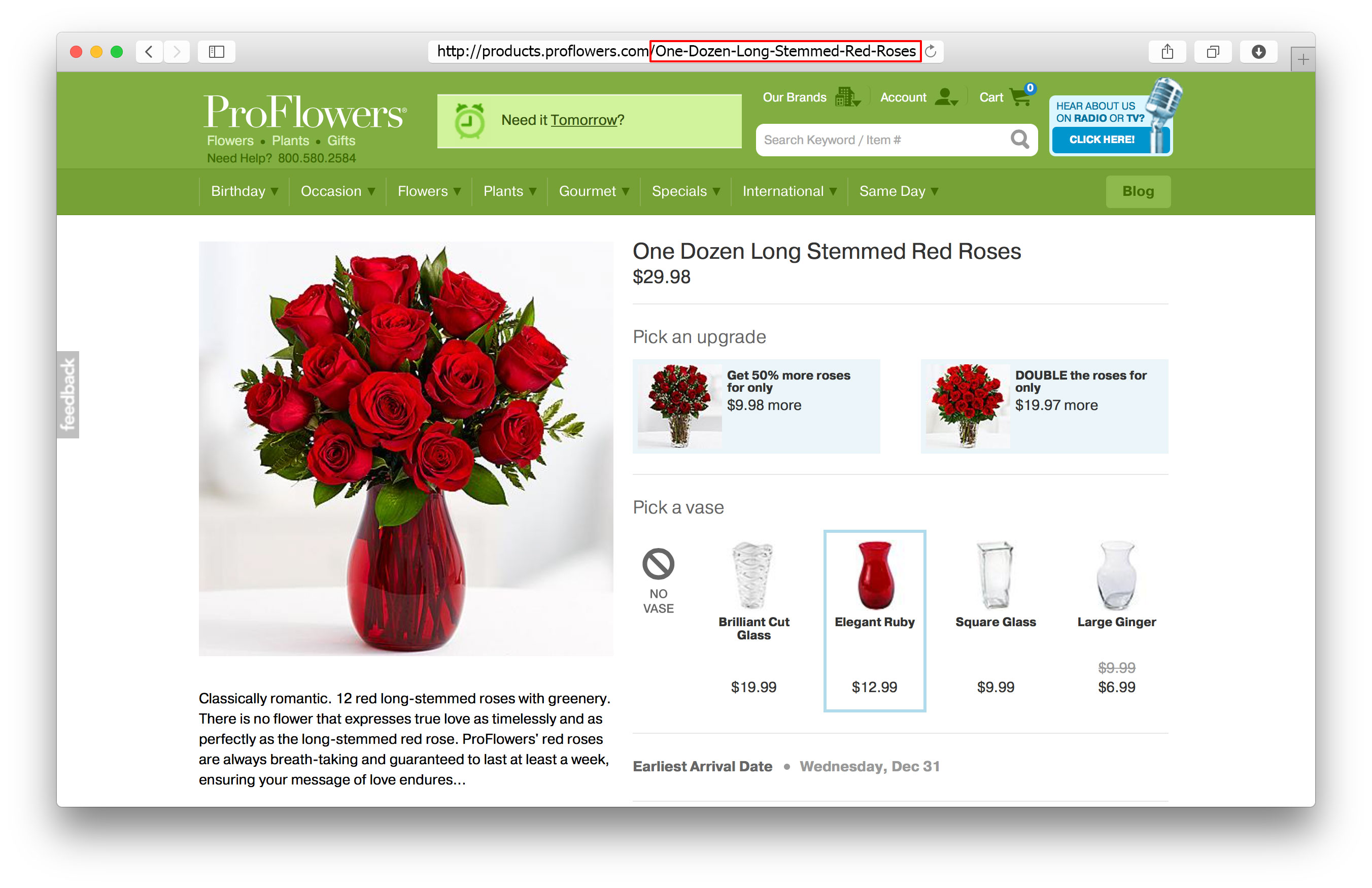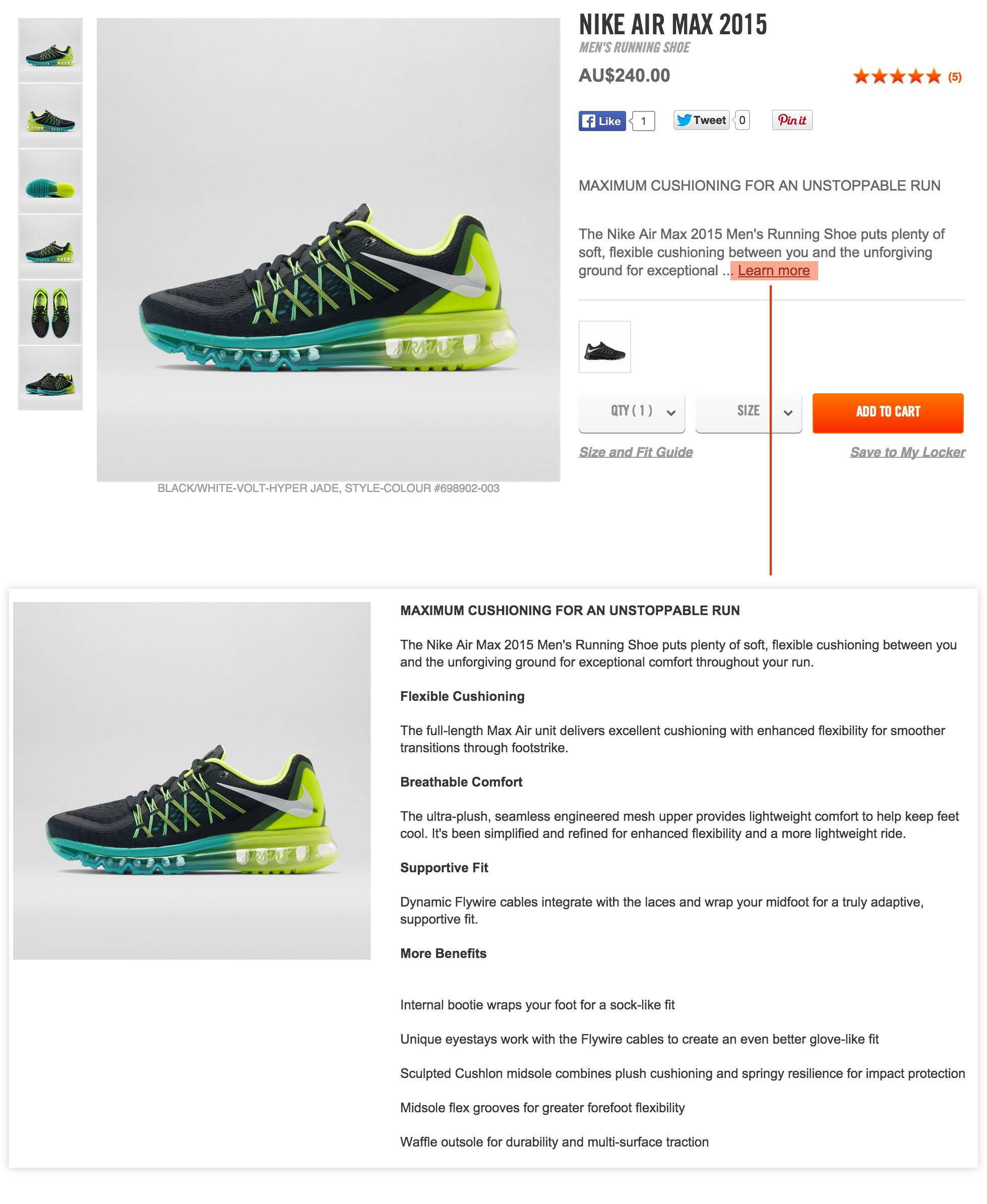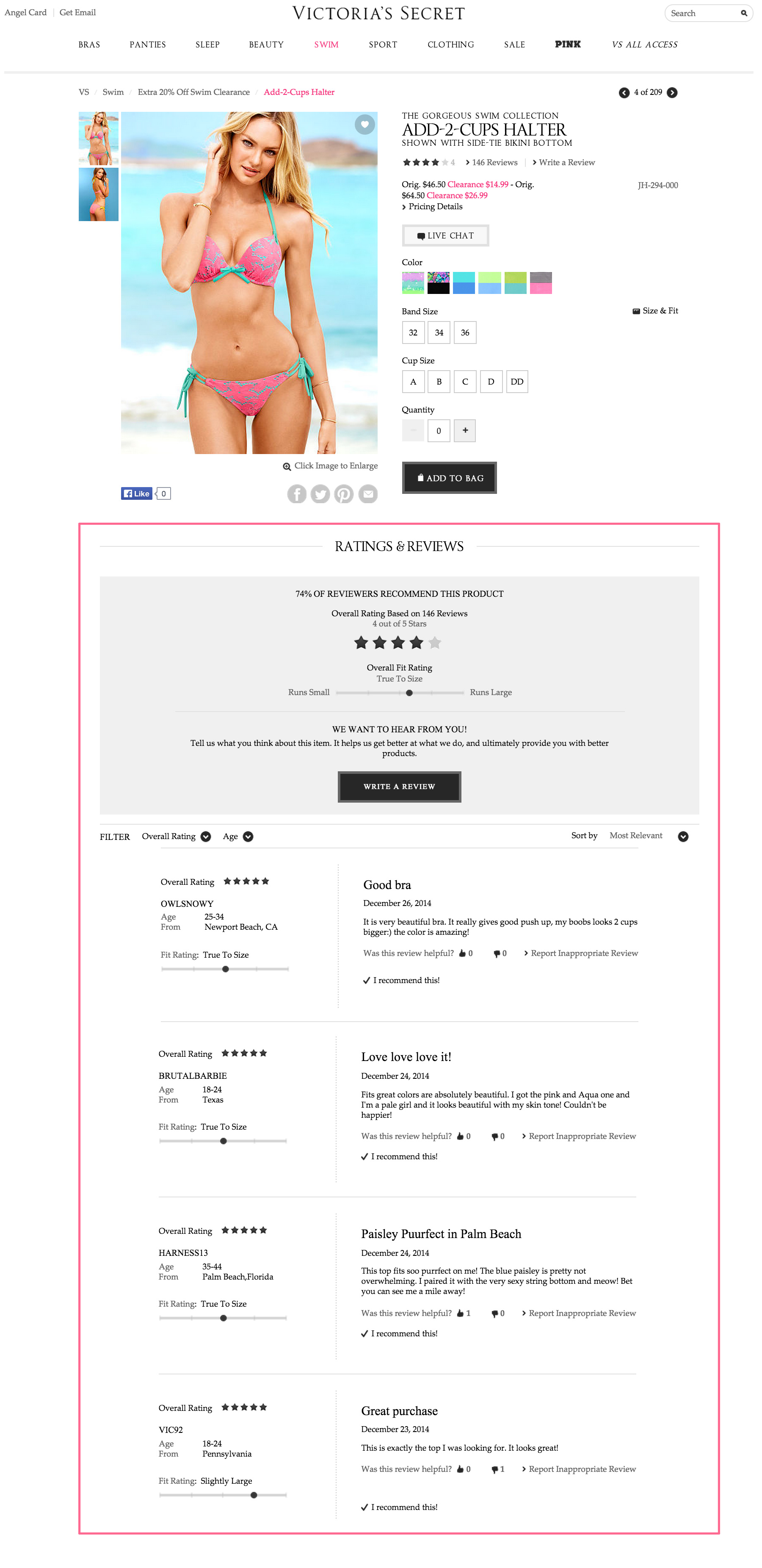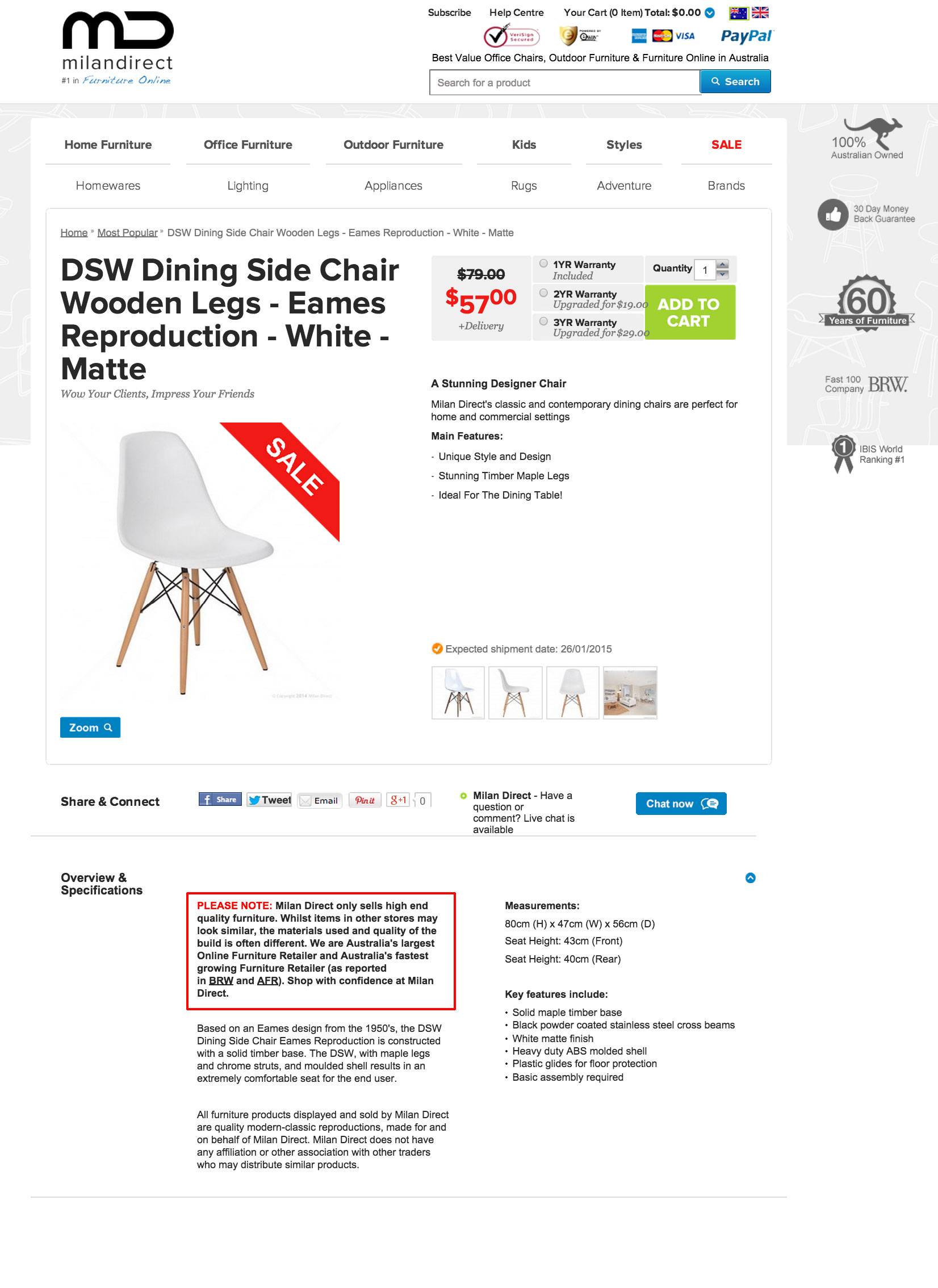Listing hundreds of products on an e-commerce website in the hopes of scoring Google search engine love is a common mistake made by many online marketers. It is a much different process to optimise your sales pages than it is to optimise your blog or 5-page website. It is much harder to create product feature pages with proper SEO (Search Engine Optimisation) because many times products are being posted, removed, or changed out. This can leave Google in a quandary about how to rate such temporary postings.
Here are 7 common pitfalls to avoid when creating highly optimised product feature pages, that will get Google’s approval and subsequently line you up for higher ranking in the Search Engine Results Pages (SERPs).
Pitfall #1: Blank or Sparse Product Descriptions
Online retailers are in such a hurry to post inventory that they often don’t bother with updating a description. Without a description, it won’t have a whole lot of luck making the top 10 in the SERPs. Even if the query is for a keyword of low competition, the fact that the description is empty will keep it from ranking high in the SERPs. It’s the wise Internet marketer that always puts in a description for the products they post, so that they at least have a chance of getting ranked in a favorable manner.
For example, these Nike Air Max’s. Of course, the picture speaks a thousand words, but the search engines cannot see images. Nike have done a great job by including both a short description that links to a rich long description that not only includes a lot of the valuable keywords but also hard-working sales copy. Lesson: make sure to add both a short and long description of the product.
There may be other text on your product page, but unless the descriptive text exceeds the count of that other text, it won’t be weighted favorably in the Google search engine. To make sure you have more text in your product description than the rest of the page, use the default text count. Then, count the words manually outside the product description from areas like the navigation sidebar or page footer. Subtract it from the total page count and if your remaining unique text is not more, then add some text in the description area so that it exceeds the rest of the text on the page.
Keep in mind the following things when writing up the unique product descriptions:
- Use Quality Content – Just because it’s a product description doesn’t mean it can’t have unique quality content. It can also be set up to persuade people browsing to purchase the product.
- No Copied Text – Google will automatically view this as plagiarism and downgrade your site’s ranking. Never copy other content directly from other sites.
- Test the Results – Descriptions that are too wordy can turn off buyers, but those that are too short can rank poorly in search engines. Make sure you are keeping track of results to figure out what works best on your site.
Pitfall #2: Copy/Pasting Manufacturer’s Product Descriptions
If you want an easy way to get banned by Google, all you have to do is copy/paste manufacturer’s product descriptions. The problem isn’t the description itself, it’s the fact that they aren’t modified or rewritten and thus appear the same throughout multiple vendor sites around the Internet. This will pop up a plagiarism red flag and Google will respond by banning the site.
That’s just the first problem with using manufacturer’s descriptions. The second problem is that those descriptions are not written with the idea of selling their products, too.
It can be a difficult task to create unique content for descriptions, especially when they describe the same thing being sold on many different sites. If you find that task near impossible, you can always use NO INDEX meta tag to clue Google to skip analysing the content on that page so it doesn’t think you’re plagiarising.
This strategy can be really helpful for online retailers that post hundreds of pages overnight when they restock inventory. This may be essential to get your items online, but Google can view this sudden influx of simple web pages as a gambit to try to game the system by creating non-unique content that makes your site appear bigger. They take a dim view of that and can penalize Internet retailers who do this, even if the intent was simply to get their inventory online. If they fail to use proper SEO to indicate to Google that this is not new unique content then, it can be counted against them. By using the NO INDEX meta tag, they can avert this crisis before it happens.
Pitfall #3: No Product Reviews Available
It is estimated that 70% of consumers online will look for a product review before they buy a product online. The reviews might be some posted on your site, on a major Internet retailer, or even in a forum. That’s why Google looks favorably on reviews and will rank them well in their SERPs. However, reviews can also benefit you online by:
- Creating Unique Content – Not only do you get unique content, but it is done by others, not you. You don’t have to spend your own time and money putting up unique content when others are willing to write up reviews for you, for free.
- Updating Content Regularly – Since reviews are posted regularly, the content is so alive it almost breathes. This is excellent for ranking purposes.
Victoria’s Secret have done a great job by not only aggregating all the user reviews and representing them in both a Star rating and overall percentage – but have also allowed each user review displayed and given them parameters to review their products on “fit” and asks them wether or not they would recommend the product.
Pitfall #4: Not Targeting High Demand Keyword Phrases
If you’re not paying close attention to what your audience wants and needs, you may end up promoting high demand keyword phrases that are not in your chosen niche. This is a really common error done by online retailers who think all they need is to look at how much in demand a keyword happens to be and then use it on their site to gain traffic. However, if it isn’t the type of product or service the audience desires in the first place, this strategy might backfire. It can also be that your keyword phrase is too general to attract the target audience you want.
For instance, if you optimize a page using the keyword “wrist band” you might end up attracting people who want jewelry, when you’re actually looking at sports wrist bands. You can further refine the keyword phrase by adding a brand name or model and some descriptive words. For instance, “Fitbit Flex pink wrist band” would work better.
With this example in mind, here are few things to always consider when you are optimising your product pages:
- Model Numbers – Add them to title tags and put them in H1 headings.
- Brand Names – Also, add them to title tags and in H1 headings.
- Alt Image Text – Use this to describe your product. Don’t leave it blank.
- No Keyword Stuffing – Don’t overuse the keyword in your product pages.
- Avoid Iframes – Never use iframes to display your product pages.
Pitfall #5: Identical Title Tags for Different Products
If you’re posting hundreds of items at a time, it can be hard to think up a unique title tag for products that are basically the same. If the brand is the same, it is even harder to differentiate different products in the title tag. Without meaning to, you’ll eventually post identical title tags for different products with the same brand. However, if you pay attention, you will want to stick to the rule that you should always use unique title tags for all your products.
Here is what a title tag looks like if you view the source code of a webpage. This example is from a ProFlowers product page:
One way you can do this is to always use the “brand-model-item-type” title tag construct. In this way, the likelihood of having an identical title tag diminishes greatly. You’ve also clearly identified each product in a very descriptive way. Car retailers will often do that when they’re selling many different cars of the same make and model. By listing further description in the tag that also includes an item and type descriptor, they can quickly list many different new cars in their inventory without fear of duplication.
Another potential for creating your own title tag construct is to simply pay attention to how your customers talk about your products online. Use their own verbiage in your title tags and you will likely attract those searching for your products in this way.
Pitfall #6: No “Speaking” URLs
Speaking URL’s or semantic keyword phrases tend to take on the meaning of a keyword, the same way a person speaks to convey meaning. Thus, if they’re discussing a book, they might ask for the one with specific characters, even if they don’t know the title of the book. If they do know the title of the book, that also has more meaning than just the ISBN code. So, you could use that in your keyword phrases. These are also called “speaking URLs” because they are URLs created with the words that someone is likely to speak when searching for an item.
What is a “speaking” url? Here is an example: http://products.proflowers.com/One-Dozen-Long-Stemmed-Red-Roses. Speaking urls are also known as “keyword friendly urls”.

- Semantics – As mentioned earlier, speaking URLs rely on meaning, instead of numbers or other product descriptors. This makes them easy to understand, from a human perspective.
- Link Love – The fact that they are so easy to understand and read, makes them ideal to remember. People can pass the URLs around more easily because they aren’t as easily forgotten as a bunch of numbers. Once they are posted somewhere else, the fact that they have the keyword phrases you are targeting in the anchor text is an excellent SEO practice. It is the main reason that Google will rank you highly for those keywords because someone else has vetted them for you.
- Relevant Keywords – The fact that the meaning is directly tied to the page means the keywords are very relevant to your content. It used to help you rank higher, but now Google doesn’t pay as close attention to relevancy. However, this can still help you attract the right audience.
Pitfall #7: Too Much Duplicate Content
Any duplicate content should be clearly tagged so that the search engine does not analyze it. Otherwise, you will be penalized. Here are a few ways to direct the search engine to not look at duplicate content:
- Use robots.txt – Block areas with the potential for duplicate content, like archives and category pages.
- Use the Canonical tag – This tag tells the Google engine which page it should pay attention to when there are two or more pages that appear the same.
- Use Nofollow – You will have to search out every link pointing to duplicate content and use this tag to keep Google from finding them.
This content appears on many pages of Milan Direct’s online furniture store.
Doing SEO Right By Focusing on the User-Experience
The main point of SEO, at least from Google’s perspective, is to make it easier to identify valuable content for their users. The more you help Google achieve that objective, by making your website user-friendly to your visitors, the more likely Google is to love you and rank you well. To do SEO in a way that pleases Google, focus on the following characteristics
- Unique Content – If it’s not unique, it won’t appeal to your customers and it will definitely harm your reputation with Google. Always seek to add unique content to your site, even when it’s just a brief product description.
- Efficient and Convenient Processes – To increase user-friendliness, make sure that your e-commerce cart works well and isn’t slow. Don’t put too many hurdles in front of potential buyers before they can close a sale. Make sure your URL links and titles are properly labeled. This not only helps you increase the bottom line, but it also convinces Google that you are a quality site.
- Interactivity – Don’t forget that if you can get people interested enough in adding their own helpful information about your products and services that you will reduce your workload while creating a community of loyal fans and followers. Make it easy for them to comment on and review products online.
By easing the path of consumers online, people will come to love and trust your online business. They may even like your pages enough to link to them, creating an online reputation that Google instantly notices and rewards. This will lead to higher ranking in the SERPs over time and more revenue!






Hey!
It looks like you're browsing in . Would you like to switch over to the website?